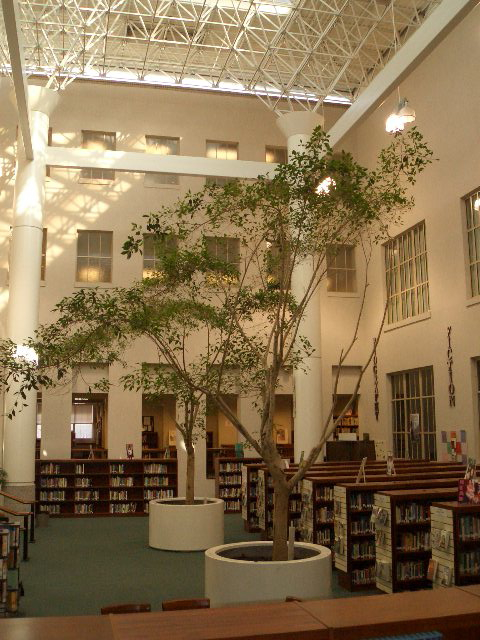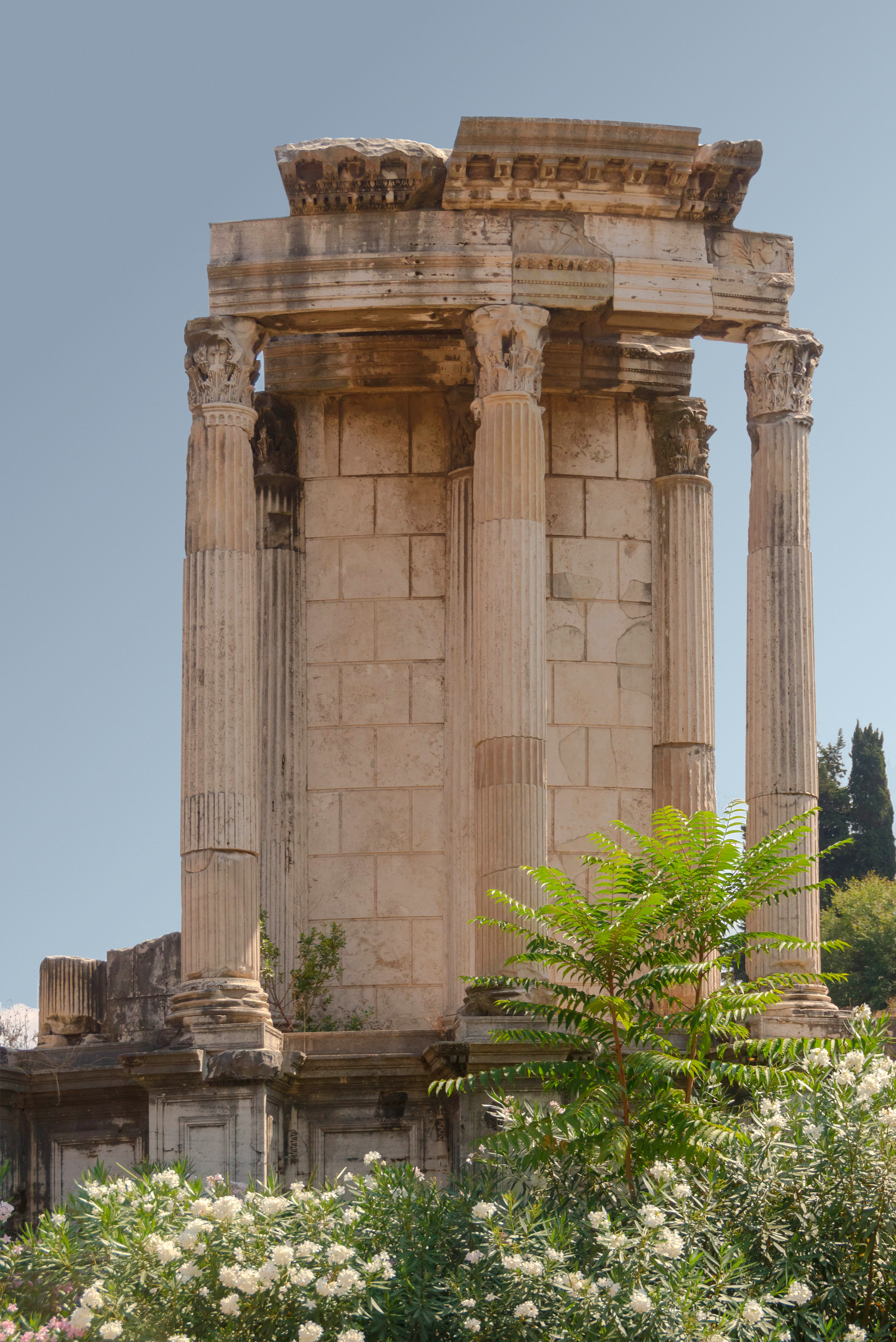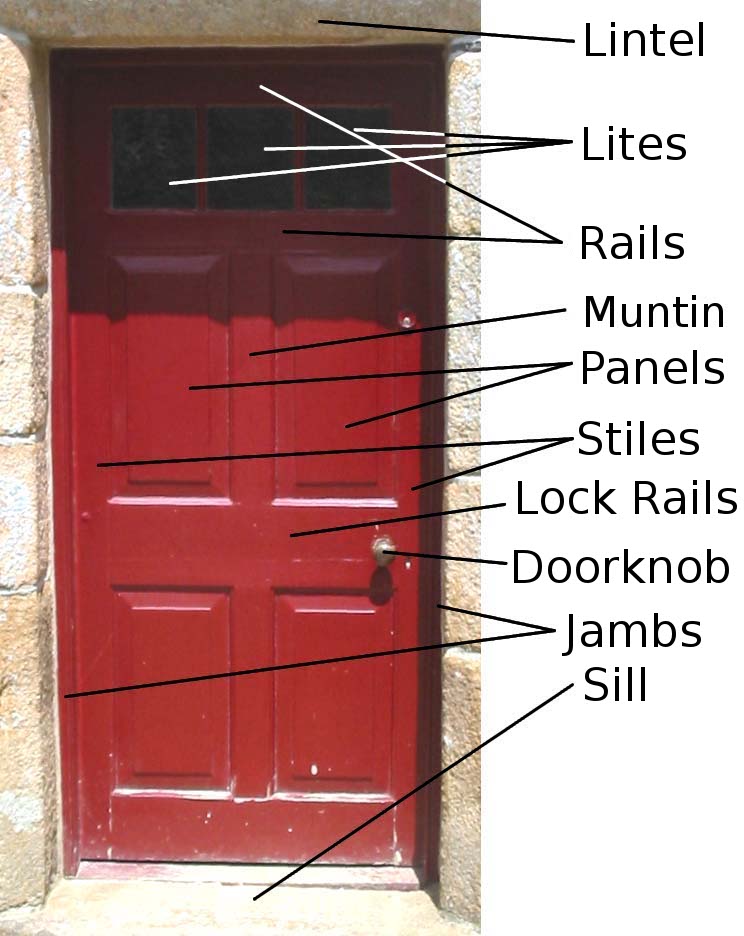|
Atrium (domus)
In ancient Rome, the ''domus'' (: ''domūs'', genitive: ''domūs'' or ''domī'') was the type of town house occupied by the upper classes and some wealthy freedmen during the Republican and Imperial eras. It was found in almost all the major cities throughout the Roman territories. The modern English word ''domestic'' comes from Latin ''domesticus'', which is derived from the word ''domus''. Along with a ''domus'' in the city, many of the richest families of ancient Rome also owned a separate country house known as a villa. Many chose to live primarily, or even exclusively, in their villas; these homes were generally much grander in scale and on larger acres of land due to more space outside the walled and fortified city. The elite classes of Roman society constructed their residences with elaborate marble decorations, inlaid marble paneling, door jambs and columns as well as expensive paintings and frescoes. Many poor and lower-middle-class Romans lived in crowded, dirty a ... [...More Info...] [...Related Items...] OR: [Wikipedia] [Google] [Baidu] |
Latin
Latin ( or ) is a classical language belonging to the Italic languages, Italic branch of the Indo-European languages. Latin was originally spoken by the Latins (Italic tribe), Latins in Latium (now known as Lazio), the lower Tiber area around Rome, Italy. Through the expansion of the Roman Republic, it became the dominant language in the Italian Peninsula and subsequently throughout the Roman Empire. It has greatly influenced many languages, Latin influence in English, including English, having contributed List of Latin words with English derivatives, many words to the English lexicon, particularly after the Christianity in Anglo-Saxon England, Christianization of the Anglo-Saxons and the Norman Conquest. Latin Root (linguistics), roots appear frequently in the technical vocabulary used by fields such as theology, List of Latin and Greek words commonly used in systematic names, the sciences, List of medical roots, suffixes and prefixes, medicine, and List of Latin legal terms ... [...More Info...] [...Related Items...] OR: [Wikipedia] [Google] [Baidu] |
Cubiculum
A ''cubiculum'' (: ''cubicula'') was a private room in a ''domus'', an ancient Roman house occupied by a high-status family. It usually led directly from the atrium, but in later periods it was sometimes adjacent to the peristyle. It was used for the functions of a modern bedroom, sleep and sex, as well as for business meetings, the reception of important guests and the display of the most highly prized works of art in the house. The ''cubiculum'' was used for quiet or secret meetings and could have been used as a library. It was also a preferred venue for murder and suicide. A room used only for sleeping was not classed as a ''cubiculum''. The private nature of the ''cubiculum'' made it a place for contemplation and religious observance, especially when illicit. According to the ''Actus Silvestri'', Constantine the Great first learned of Christianity Christianity is an Abrahamic monotheistic religion, which states that Jesus in Christianity, Jesus is the Son of God (Chr ... [...More Info...] [...Related Items...] OR: [Wikipedia] [Google] [Baidu] |
Atrium (architecture)
In architecture, an atrium (: atria or atriums) is a large open-air or skylight-covered space surrounded by a building. Atria were a common feature in Ancient Roman dwellings, providing light and ventilation to the interior. Modern atria, as developed in the late 19th and 20th centuries, are often several stories high, with a glazed roof or large windows, and often located immediately beyond a building's main entrance doors (in the lobby). Atria are a popular design feature because they give their buildings a "feeling of space and light." The atrium has become a key feature of many buildings in recent years. Atria are popular with building users, building designers and building developers. Users like atria because they create a dynamic and stimulating interior that provides shelter from the external environment while maintaining a visual link with that environment. Designers enjoy the opportunity to create new types of spaces in buildings, and developers see atria as prestigi ... [...More Info...] [...Related Items...] OR: [Wikipedia] [Google] [Baidu] |
Atrium Interior
Atrium may refer to: Anatomy * Atrium (heart), an anatomical structure of the heart * Atrium, the genital structure next to the genital aperture in the reproductive system of gastropods * Atrium of the ventricular system of the brain * Pulmonary alveolus (also known as atrium alveolus), microscopic air sac in the lungs Architecture * Atrium (architecture), an open space within a building, either open to the sky or featuring a glass roof ** Ancient Roman atrium, a grand entrance hall, reception room, and living room in a traditional Roman house. Specific buildings * Amot Atrium Tower, a tower in Ramat Gan, Israel * Atrium, Cardiff, a University of South Wales building in Cardiff * Atrium Building, a skyscraper in Guatemala City * Atrium Casino, a casino in Dax, France * Atrium Cinemas, a movie theatre in Karachi, Pakistan * Winter Garden Atrium, a Brookfield Properties building in the World Financial Center of the World Trade Center, New York City * Atrium on Bay, a retail a ... [...More Info...] [...Related Items...] OR: [Wikipedia] [Google] [Baidu] |
Temple Of Vesta
The Temple of Vesta, or the aedes (Latin ''Glossary of ancient Roman religion#aedes, Aedes Vestae''; Italian language, Italian: ''Tempio di Vesta''), was an ancient edifice in Rome, Italy. It is located in the Roman Forum near the Regia and the House of the Vestals, House of the Vestal Virgins. The Temple of Vesta housed Vesta's holy fire, which was a symbol of Rome's safety and prosperity. The temple has a circular footprint, making it a Tholos (architecture), tholos. Since the worship of Vesta (mythology), Vesta began in private homes, the architecture seems to pay homage to the architecture of early Roman homes. The temple's current, ruinous form employs elements of Architecture of Ancient Greece, Greek architecture with Corinthian columns and marble. The sacred hearth was housed in a central cella. The surviving structure indicates that there were twenty Corinthian columns built on a podium fifteen meters in diameter. The roof probably had a vent at the apex to allow smoke to ... [...More Info...] [...Related Items...] OR: [Wikipedia] [Google] [Baidu] |
Etruscans
The Etruscan civilization ( ) was an ancient civilization created by the Etruscans, a people who inhabited Etruria in List of ancient peoples of Italy, ancient Italy, with a common language and culture, and formed a federation of city-states. After adjacent lands had been conquered its territory covered, at its greatest extent, roughly what is now Tuscany, western Umbria and northern Lazio, as well as what are now the Po Valley, Emilia-Romagna, south-eastern Lombardy, southern Veneto and western Campania. A large body of literature has flourished on the origins of the Etruscans, but the consensus among modern scholars is that the Etruscans were an indigenous population. The earliest evidence of a culture that is identifiably Etruscan dates from about 900 BC. This is the period of the Iron Age Villanovan culture, considered to be the earliest phase of Etruscan civilization, which itself developed from the previous late Bronze Age Proto-Villanovan culture in the same region, p ... [...More Info...] [...Related Items...] OR: [Wikipedia] [Google] [Baidu] |
Insula (building)
In Roman architecture, an ''insula'' (Latin for "island", : ''insulae'') was one of two things: either a kind of apartment building, or a city block. This article deals with the former definition, that of a type of apartment building. ''Insulae'' housed most of the urban citizen population of ancient Rome's massive population ranging from 800,000 to 1 million inhabitants in the early imperial period. Residents of an ''insula'' included ordinary people of lower- or middle-class status (the ''plebeians'') and all but the wealthiest from the upper-middle class (the ''equites''). The traditional elite and the very wealthy lived in a ''domus'', a large single-family residence, but the two kinds of housing were intermingled in the city and not segregated into separate neighbourhoods. The ground-level floor of the ''insula'' was used for '' tabernae'', shops and businesses, with living spaces above. Like modern apartment buildings, an ''insula'' might have a name, usually referring to ... [...More Info...] [...Related Items...] OR: [Wikipedia] [Google] [Baidu] |
Jamb
In architecture Architecture is the art and technique of designing and building, as distinguished from the skills associated with construction. It is both the process and the product of sketching, conceiving, planning, designing, and construction, constructi ..., a jamb (), is the side-post or lining of a doorway or other aperture. The jambs of a window outside the frame are called . Small shafts to doors and windows with caps and bases are called ; when in the inside arris of the jamb of a window, they are sometimes called . A doorjamb, door jamb, or sometimes doorpost is the vertical portion of the door frame onto which a door is secured. The jamb bears the weight of the door through its hinges, and most types of door latches and deadbolts extend into a recess in the doorjamb when engaged, making the accuracy of the plumb (i.e. true vertical) and strength of the doorjambs vitally important to the overall operational durability and security of the door. The word ... [...More Info...] [...Related Items...] OR: [Wikipedia] [Google] [Baidu] |
Elite
In political and sociological theory, the elite (, from , to select or to sort out) are a small group of powerful or wealthy people who hold a disproportionate amount of wealth, privilege, political power, or skill in a group. Defined by the ''Cambridge Dictionary'', the "elite" are "the richest, most powerful, best-educated, or best-trained group in a society". American sociologist C. Wright Mills states that members of the elite accept their fellows' position of importance in society. "As a rule, 'they accept one another, understand one another, marry one another, tend to work, and to think, if not together at least alike'." It is a well-regulated existence where education plays a critical role. Plantations As European settlers began to colonize the Americas in the 16th and 17th centuries, they quickly realized the economic potential of growing cash crops which were in high demand in Europe. Owned by the planter class, plantations, large-scale farms where large numbers of ... [...More Info...] [...Related Items...] OR: [Wikipedia] [Google] [Baidu] |
Fortified City
A defensive wall is a fortification usually used to protect a city, town or other settlement from potential aggressors. The walls can range from simple palisades or earthworks to extensive military fortifications such as curtain walls with towers, bastions and gates for access to the city. From ancient to modern times, they were used to enclose settlements. Generally, these are referred to as city walls or town walls, although there were also walls, such as the Great Wall of China, Walls of Benin, Hadrian's Wall, Anastasian Wall, and the Atlantic Wall, which extended far beyond the borders of a city and were used to enclose regions or mark territorial boundaries. In mountainous terrain, defensive walls such as '' letzis'' were used in combination with castles to seal valleys from potential attack. Beyond their defensive utility, many walls also had important symbolic functions representing the status and independence of the communities they embraced. Existing ancient walls are ... [...More Info...] [...Related Items...] OR: [Wikipedia] [Google] [Baidu] |






